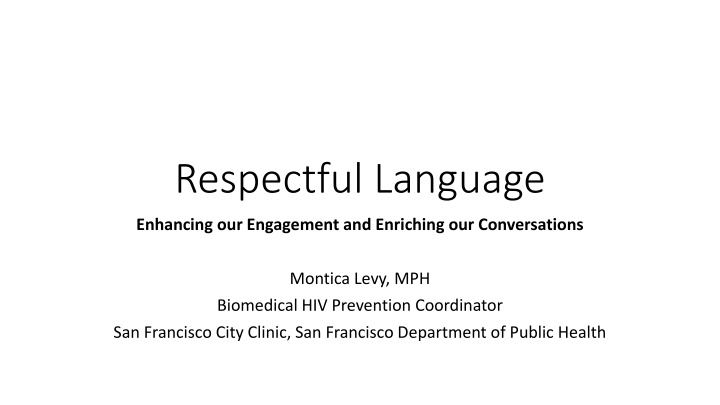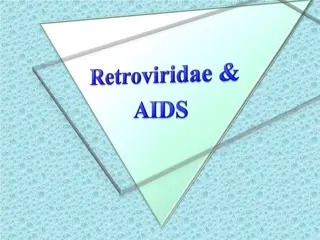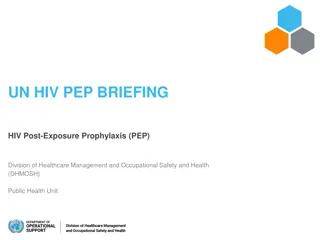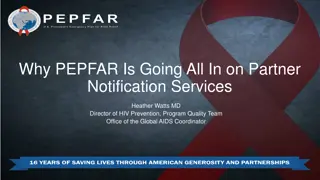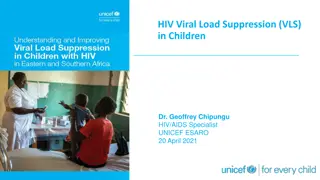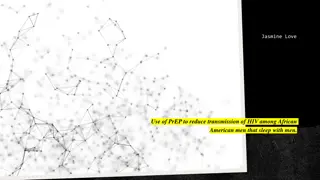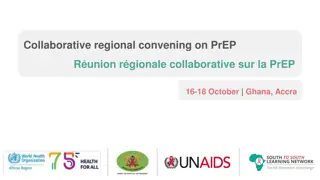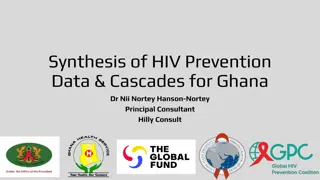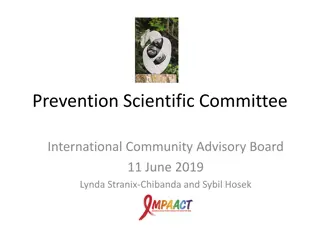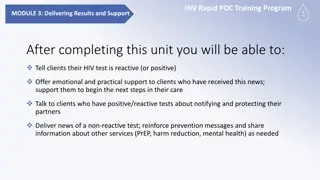Enhancing Conversations with Respectful Language in HIV Prevention
Explore the significance of using respectful language in engaging with diverse community members for HIV prevention. Learn how language impacts trust, rapport, and patient outcomes. Discover examples of respectful language and its role in supporting trans clients. Watch a relevant video and reflect on how trust can be maintained or broken in counseling sessions about HIV prevention and sexual health needs.
Download Presentation

Please find below an Image/Link to download the presentation.
The content on the website is provided AS IS for your information and personal use only. It may not be sold, licensed, or shared on other websites without obtaining consent from the author.If you encounter any issues during the download, it is possible that the publisher has removed the file from their server.
You are allowed to download the files provided on this website for personal or commercial use, subject to the condition that they are used lawfully. All files are the property of their respective owners.
The content on the website is provided AS IS for your information and personal use only. It may not be sold, licensed, or shared on other websites without obtaining consent from the author.
E N D
Presentation Transcript
Respectful Language Enhancing our Engagement and Enriching our Conversations Montica Levy, MPH Biomedical HIV Prevention Coordinator San Francisco City Clinic, San Francisco Department of Public Health
Agenda 1. Why does respectful language matter? 2. Examples of respectful language Supporting trans clients and their partners 3. Open discussion/Q+A
Why does respectful language matter? We want people who could benefit from PrEP to stay engaged in it We want to be a welcoming place for diverse community members to work Language is one of the most basic ways to show respect Respect is how we gain trust We choose whether we build or break trust with the client
Rapport and trust: the virtuous cycle We have once chance to make a good first impression If we make good first impression, patient will eventually take more and more (emotional) risks with us, be more vulnerable and open If we punish a risk even unknowingly, the patient will not take another risk for a while, maybe even at other clinics So we must make it safer and safer for them to take more and more risks with us Note: my use of risk here is different from risk as a term used in HIV prevention we will discuss that soon Take risk Trust built Risk rewarded
Rapport and trust Take risk Patient leaves Risk punished Trust broken
Video time https://www.youtube.com/watch?v=ISsdS vJhniQ
1. How does the topic of this video apply to our work counseling people about their needs related to HIV prevention and sexual health? 2. Where in the conversation was trust likely to get broken? Video debrief Take notes to report back out
Examples of respectful language
People-first language Ensure that the language puts people first Just like we can build or break trust, we can create or combat stigma
Stigmatizing Language Destigmatizing Language HIV-infected person HIV or AIDS patient, AIDS or HIV carrier Person living with HIV; PLWH Never use "infected" when referring to a person Zero new infections Zero new HIV transmissions HIV infections HIV transmissions; diagnosed with HIV Number of infections Number diagnosed with HIV; number of HIV acquisitions Became infected Contracted or acquired; diagnosed with Serodiscordant couple Serodifferent, magnetic, or mixed-status couple, couple with two different HIV statuses Compliant Takes the pill every [how often] Prostitute or prostitution Sex worker; sale of sexual services; transactional sex Promiscuous This is a value judgment and should be avoided. Use "multiple partners . Sex without condoms, PrEP, treatment-as-prevention methods Condomless sex with PrEP Condomless sex without PrEP Condomless sex Unprotected sex Referring to yourself or others as being "clean" suggests that those living with HIV are dirty. Avoid this term. Clean, as in "I am clean, are you?" A drug that prevents HIV infection A drug that prevents the transmission/acquisition of HIV Risk means a lot of things so just say what you mean: The specific behavior? Chance of acquiring HIV in the next year? Chance of individual sex act transmitting HIV? Risk/risky Adapted from https://www.thewellproject.org/hiv-information/why-language-matters-facing-hiv-stigma-our-own-words
Supporting trans clients and their partners
Taking a sexual history Do you have sex with men, women, or both? What were the genders of your sex partners? What body parts do you use for sex? Why ask this way? Help clients feel seen, not othered, builds trust Ask an open-ended question, get an open-ended answer! A LOT of cis straight men have sex with trans women but are never asked about it and so are not offered crucial HIV prevention services to protect them and their trans women partners
Mirror the client s words They may say something you did not expect Say it back whenever you are comfortable doing so Common examples: I f**ked 6 guys this weekend Yes, we barebacked and he came inside me Um we had um anal intercourse?
The Gender Binary LOL! There are only two sexes/genders Orders everything about life from the first ultrasound
An umbrella term for people whose gender identity and/or gender expression differs from what is typically associated with the sex they were assigned at birth. Transgender This is why the two-part question asks about sex assigned at birth and current gender identity. For trans people, these are rarely the same.
People who are NOT transgender Cisgender people have a gender identity that is the same as the sex assigned to them at birth Most people are cisgender When we name a group of people, we call them out as being different. The word cisgender balances the field. It s also specific, so we know what we re talking about. Cisgender
Poll: Two-part gender/sex question Does your current clinic/agency ask about gender and sex in a separated, two-part question? A. We ask a two-part question B. We ask one question only
1. What is your gender? (Check one that best describes your current gender identity.) (1) Male The Two-Part Question (2) Female (3) Trans Male (4) Trans Female (5) Genderqueer / Gender Non-binary (6) Not listed, please specify____________________
2. What was your sex assigned at birth? (Check one) The Two-Part Question (1) Male (2) Female
Why a two-part question? Allows trans people to be counted Creates consistency in terminology and coding Not all trans people identify as transgender Concise and feasible Reduced patient harms/dissatisfaction due to a failure to use chosen names and pronouns Teaches all people about what transgender means
A few definitions Trans Male: People who were assigned female at birth but identify and live as a man may use this term to describe themselves
Trans Female Trans Female: People who were assigned male at birth but identify and live as a woman may use this term to describe themselves.
Genderqueer Genderqueer / Gender Non-binary: people who experience their gender identity and/or gender expression as falling outside the categories of man and woman. They may define their gender as falling somewhere in between man and woman, or they may define it as totally different from these terms.
What terms to use? It boils down to dignity How would we want people to talk about us? Again, mirror the terms a client uses to define themselves Use their correct pronoun and correct name
Some other DONTs MTF/male-to-female FTM/female-to-male trans woman trans man
Some other DONTs transwoman transman trans woman trans man Two words, with a space in between
Open discussion/Q+A Please share your thoughts and questions!
Thank you! montica.levy@sfdph.org 33
